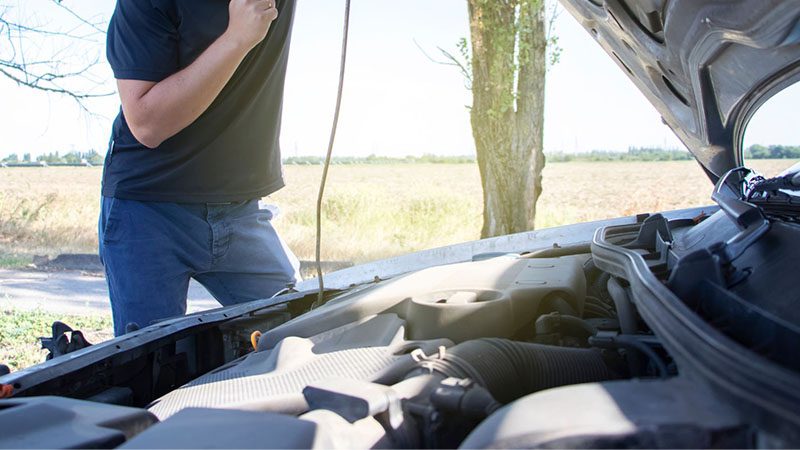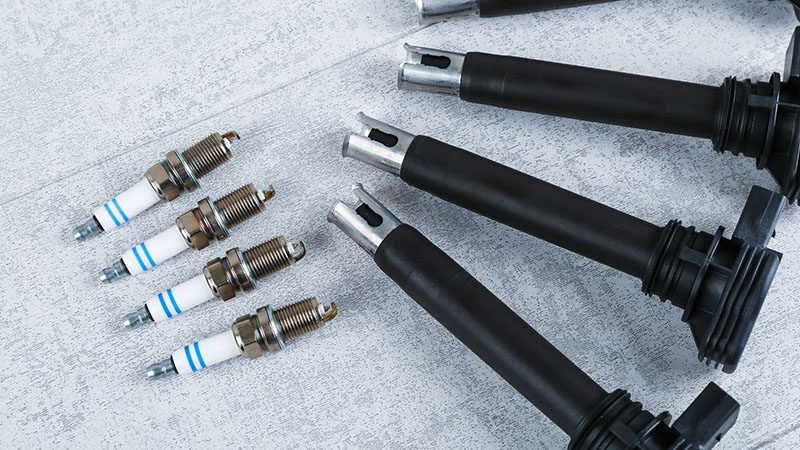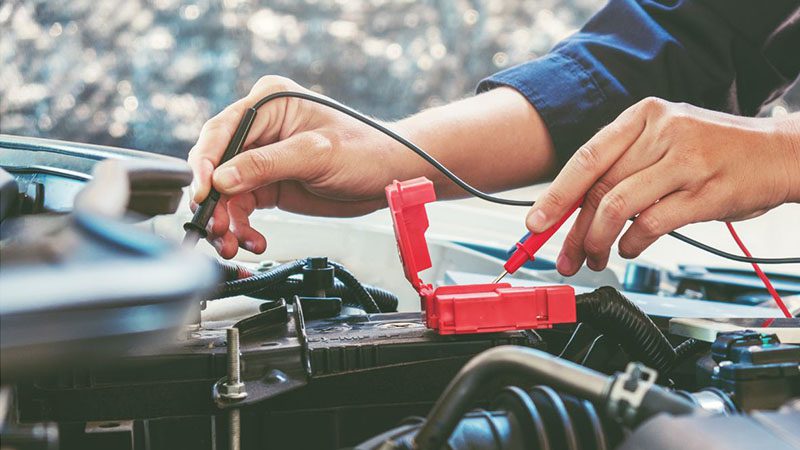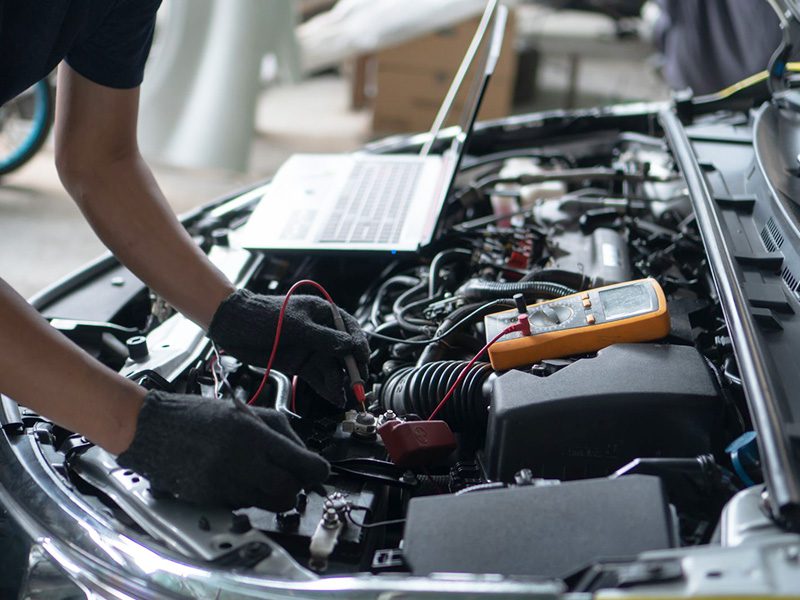If your car has ever stumbled, hesitated, or shaken unexpectedly, you might have experienced an engine misfire. It’s one of those issues that can be subtle at first but, left unchecked, can quickly snowball into bigger (and more expensive) problems.
In this guide, we’ll break down what a misfire actually is, the telltale signs to watch for, the most common causes, and how to get it fixed before it costs you a fortune.
What Is an Engine Misfire?
Think of your engine like a team of synchronized athletes — each cylinder is responsible for pulling its weight at just the right moment. When everything’s in sync, you get smooth power and efficient fuel use.
A misfire happens when one or more cylinders fail to fire properly during the combustion process. Instead of a clean, powerful “bang,” you get a weak or missing combustion event. That’s when your car may start to feel rough, sluggish, or even unsafe.

Common Engine Misfire Symptoms
Misfires aren’t always obvious, but once you know the signs, they’re hard to ignore.
1. Rough Idle or Vibration
If your steering wheel, dashboard, or seat vibrates more than usual while idling, it could be a sign one cylinder isn’t pulling its weight.
2. Loss of Power & Poor Acceleration
A misfire robs your engine of efficiency. Pressing the gas may feel unresponsive, or the car might struggle to climb hills.
3. Engine Hesitation or Jerking
Sudden lurches or momentary stalls while driving often point to ignition or fuel delivery issues.
4. Check Engine Light
Modern cars will log a misfire and trigger a check engine light, often with a code like P0300 (random misfire) or P0301–P0306 (specific cylinder misfire).

5. Unusual Exhaust Smell or Smoke
Raw fuel may exit through the exhaust, creating a strong fuel smell or even visible smoke.
6. Increased Fuel Consumption
If combustion isn’t happening correctly, your car will burn more fuel to compensate.
Top Engine Misfire Causes
Misfires have many possible culprits. Here are the most common:
1. Ignition System Failures
- Worn or fouled spark plugs – Can’t create a strong spark.
- Faulty ignition coils – Fail to deliver voltage to the spark plugs.
- Damaged plug wires – Reduce spark strength.

2. Fuel Delivery Problems
- Clogged fuel injectors – Restrict fuel flow.
- Weak fuel pump – Can’t maintain proper pressure.
3. Air Intake & Vacuum Leaks
- Cracked hoses or leaking intake manifold gaskets can throw off the air/fuel ratio.
4. Engine Timing Issues
- A stretched timing chain or worn timing belt can cause valves to open or close at the wrong time.

5. Mechanical Problems
- Low cylinder compression from worn piston rings, damaged valves, or head gasket failure.
6. Sensor & ECU Problems
- Bad MAF (Mass Air Flow) or O2 sensors can send false readings, leading to improper fueling.
Cylinder-Specific Misfire Causes
Sometimes a misfire affects just one cylinder, which can make it easier to track down.
1. Bad Coil-on-Plug Unit
A common cause is a bad coil-on-plug unit — when the coil fails, that cylinder’s spark becomes weak or disappears entirely.
2. Clogged Fuel Injector
Another frequent culprit is a clogged fuel injector, which restricts fuel flow and disrupts combustion.
3. Valve or Piston Damage
In more serious cases, valve or piston damage can lead to low compression, making the cylinder incapable of producing power even with good spark and fuel.
If an OBD-II scanner shows a code like P0302, it means cylinder #2 is misfiring. From there, you can swap ignition coils, test injectors, or run a compression test to pinpoint the problem.

How to Diagnose an Engine Misfire
You can’t fix what you can’t confirm, so a proper diagnosis is the first step toward solving a misfire. Rushing to replace parts without testing can waste time and money.
Step 1: Scan for Trouble Codes
Use an OBD-II scanner to read stored fault codes. Codes like P0300 indicate a random misfire, while P0301–P0306 point to a specific cylinder. This gives you a starting point for further inspection.
Step 2: Inspect the Ignition Components
Remove and check spark plugs for carbon buildup, oil fouling, or worn electrodes. Inspect ignition coils and plug wires for cracks, corrosion, or burn marks that could weaken the spark.

Step 3: Check the Fuel System
Ensure the fuel injectors are clean and delivering fuel evenly. A clogged injector or weak fuel pump can cause one or multiple cylinders to misfire. Also, inspect for any fuel leaks or damaged fuel lines.
Step 4: Perform a Compression Test
Low compression in a cylinder points to internal mechanical issues like worn piston rings, a damaged valve, or a blown head gasket. This step helps separate fuel/ignition problems from engine damage.
Step 5: Test Sensors and Wiring
Faulty sensors — such as the MAF (Mass Air Flow) sensor or oxygen sensor — can mislead the ECU, resulting in poor combustion. Check wiring harnesses for damage, loose connections, or corrosion.

Pro Tip: If you’re unsure about using diagnostic tools or working with engine electronics, it’s worth getting help from a qualified mechanic. They have the equipment and expertise to identify the root cause quickly and accurately.
Risks of Driving with a Misfire
Driving with a misfire isn’t just costly — it’s risky. Unburned fuel can overheat and ruin the catalytic converter, turning a small repair into a $1,000+ expense. The imbalance in power delivery can cause vibrations that stress engine mounts, lower fuel efficiency, and raise emissions.
From a safety angle, a misfire can lead to sudden power loss during acceleration or overtaking, and in severe cases, cause the engine to stall. Even if the car still runs, ignoring a misfire almost always leads to higher repair costs and greater risk on the road.

Engine Misfire Repair & Cost Guide
The cost to fix a misfire depends entirely on the root cause. Simple ignition-related problems can be fixed for a few hundred dollars, while complex internal engine repairs can climb into the thousands. Below is a breakdown of common repairs, realistic price ranges, and what each job involves:
| Repair Type | Average Cost (Parts & Labor) | What It Involves |
|---|---|---|
| Spark Plugs | $100 – $300 | Replace worn or fouled plugs to restore proper ignition. Typically part of routine maintenance every 30k–100k miles. |
| Ignition Coils | $200 – $350 | Replace faulty coil(s) that fail to deliver spark. Most modern engines use one coil per cylinder. |
| Fuel Injectors | $300 – $900 | Clean or replace clogged injectors to ensure proper fuel spray and combustion. |
| Fuel Pump (if needed) | $400 – $850 | Replace a weak or failed pump that can’t maintain fuel pressure. |
| Timing Belt/Chain | Belt: $600 – $1,400 Chain: $2,000 – $2,700+ | Replace stretched or worn timing components to restore accurate valve timing. Chain replacement is more labor-intensive and costly than belt jobs. |
| Mechanical Repairs | $1,000 – $4,000+ | Fix internal damage such as burnt valves, worn piston rings, or head gasket failure. Costs vary widely depending on severity and engine type. |
Note: Costs can vary based on vehicle make, model, location, and whether OEM or aftermarket parts are used. High-performance or luxury vehicles often fall at the upper end of these ranges — or beyond.
Prevention Tip: Following your vehicle’s maintenance schedule — including timely spark plug replacement, injector cleaning, and fuel filter changes — can prevent most misfire-related issues. Running an OBD-II scan at the first sign of trouble is far cheaper than waiting until major components fail.

FAQs
How do you fix a misfire in an engine?
The fix depends on the cause. Start by scanning for error codes with an OBD-II tool, then inspect the ignition system, fuel delivery, and engine compression. Replace faulty components, clean clogged injectors, or address mechanical issues as needed.
What is the most common cause of engine misfire?
Worn or fouled spark plugs are the most common culprit, followed by faulty ignition coils and clogged fuel injectors.
Can I still drive if my engine is misfiring?
You can, but it’s not recommended. Driving with a misfire can cause more damage and turn a minor repair into a costly one.
How serious is an engine misfire?
A misfire should be taken seriously. If ignored, it can lead to engine damage, catalytic converter failure, and unsafe driving conditions.
Is it expensive to fix an engine misfire?
Costs vary widely. Simple repairs like spark plugs may cost $100–$300, while major mechanical work can exceed $3,000.

Conclusion
An engine misfire can be anything from a quick, low-cost fix to a sign of serious mechanical trouble. By spotting the symptoms early and understanding the possible causes, you can take action before the issue leads to costly repairs.
At Nanjing Woda Auto Technology Co., Ltd., we supply high-quality engine parts — from spark plugs and ignition components to complete cylinder heads and engine assemblies — to B2B clients worldwide. With over 25 years of industry experience, we partner with distributors, repair shops, and fleet operators to keep vehicles running smoothly and reliably.
Contact us today to source dependable engine components at competitive wholesale prices and help your customers get back on the road faster.






